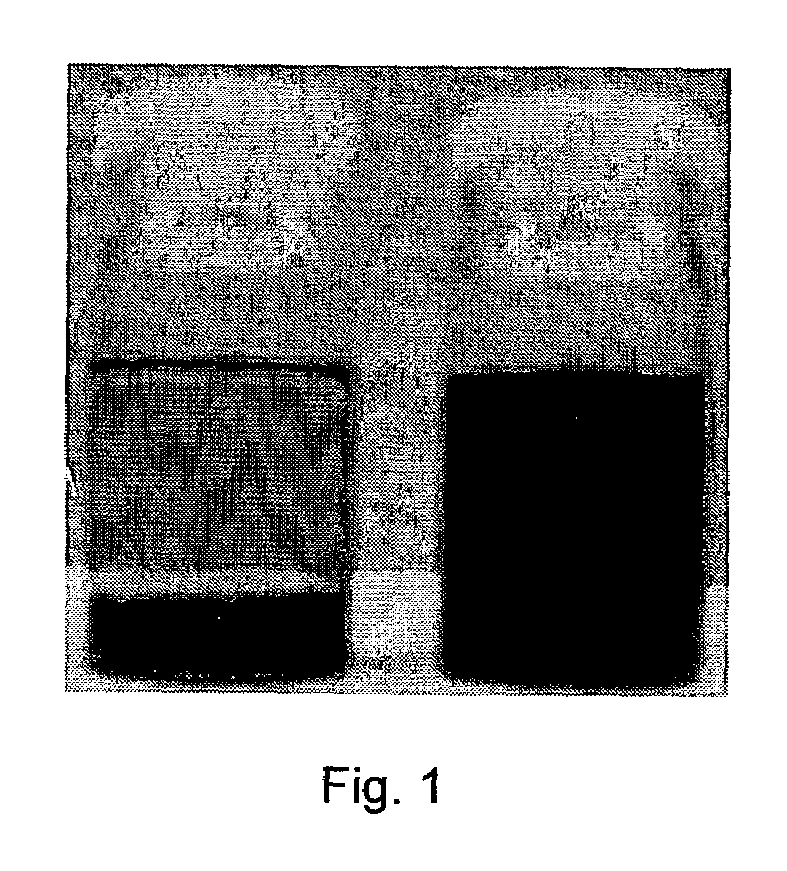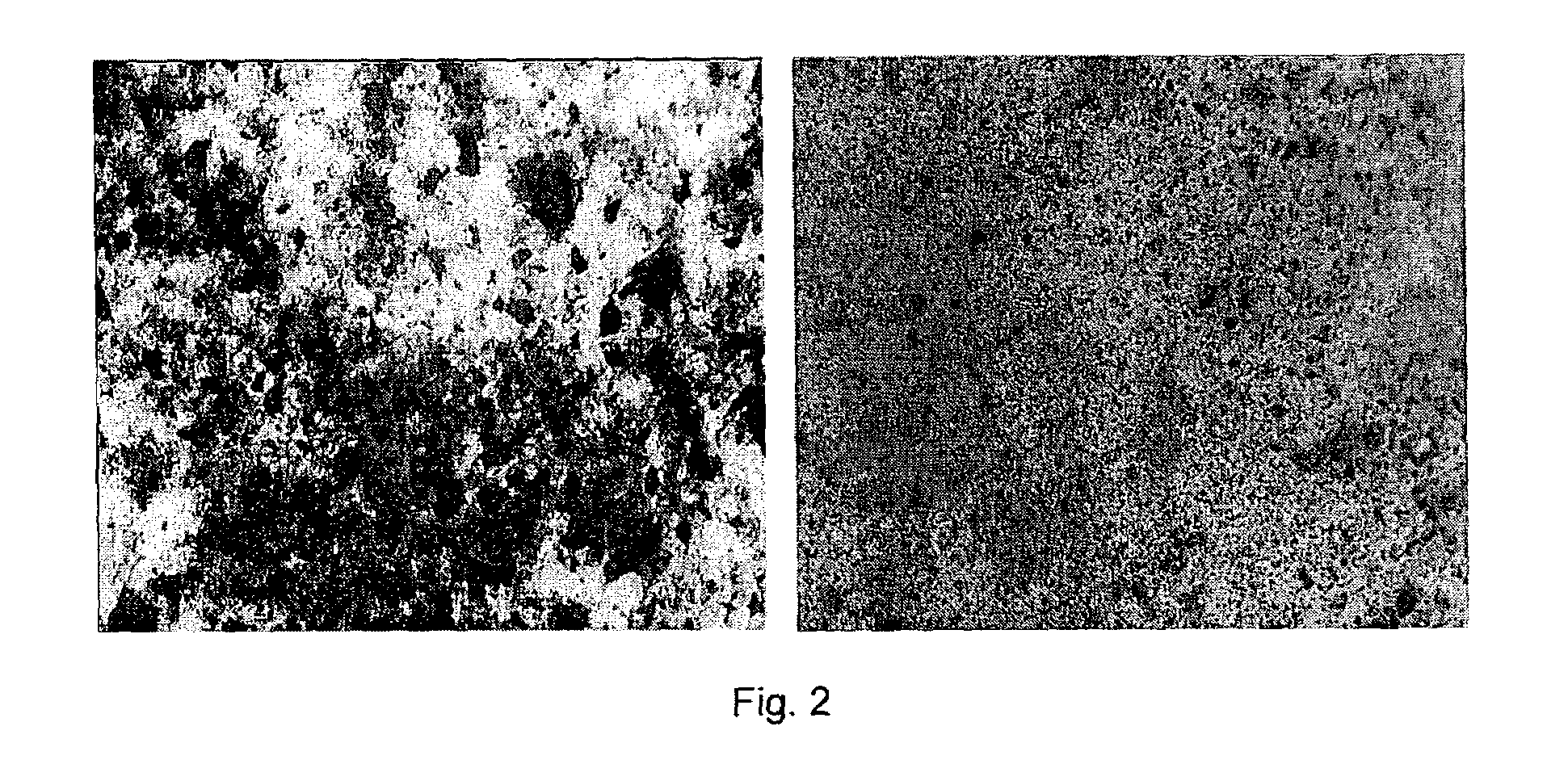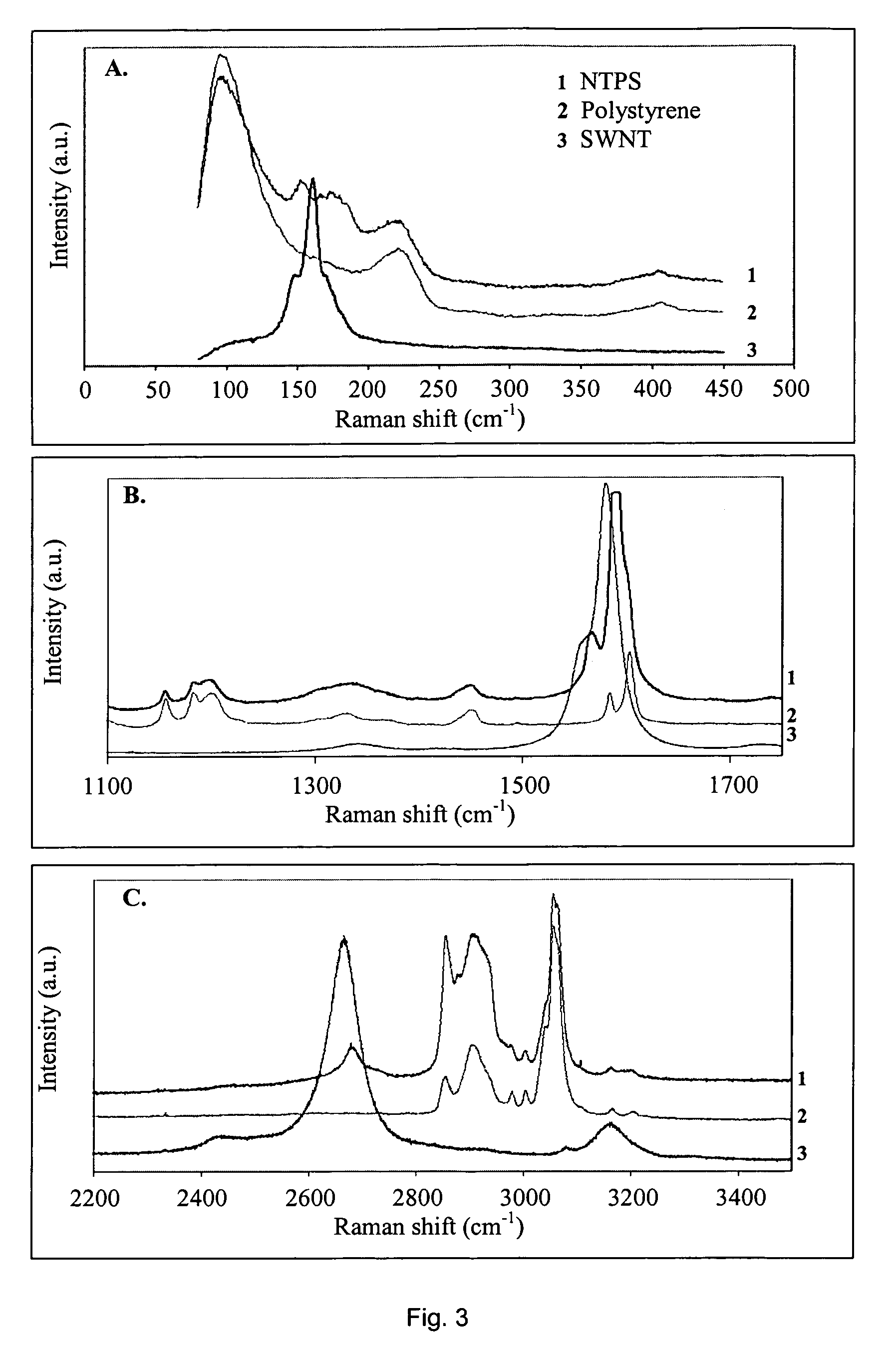Carbon nanotube-filled composites prepared by in-situ polymerization
a carbon nanotube and composite technology, applied in nanostructure manufacturing, metal/metal-oxide/metal-hydroxide catalysts, etc., can solve the problems of inability to form conductive networks at relatively low loading, inability to use solution-casting methods to produce highly conductive films, and inability to combine swnts with monomers in situ miniemulsion techniques
- Summary
- Abstract
- Description
- Claims
- Application Information
AI Technical Summary
Problems solved by technology
Method used
Image
Examples
example 1
Preparation of Nanotube-Polystyrene Composites and Nanotube-Styrene-Isoprene Copolymer Composites
[0022]SWNTs were purchased from CARBOLEX(™) (batch CLAP 8256). This raw material was suspended in a 3 M HNO3 solution and kept for about 10 h in reflux until the evolution of NO2 vapors subsided. After this treatment, the product was vacuum-filtered, using a Teflon membrane with pore size 0.2μ(PTFE 0.2μ). The resulting solid was then thoroughly washed with deionized water until the filtrate completely lost the yellowish color initially present. The carbon content in this final product was 86 wt %, which was primarily single-walled carbon nanotubes14.
[0023]In a preferred embodiment, SWNTs are treated and / or functionalized before they are used in the invention contemplated herein. SWNTs are suspended in deionized water to which an aqueous solution of HCl is added to cause the protonation of the oxidized groups generated during the purification step. It has been previously shown that after ...
example 2
Preparation of SWNT-Filled Composite Using Catalyst-Supported SWNTs
[0041]SWNTs which are still associated with on a particulate catalyst material can also be used in the process of the present invention to form SWNT-filled composites. Such catalyst-supported SWNTs are known to those of ordinary skill in the art, for example, see U.S. Pat. Nos. 6,333,016 and 6,413,487, each of which is hereby expressly incorporated by reference herein in its entirety. Catalyst-supported SWNTs as contemplated herein may comprise metallic catalysts comprising one or more transition methods (e.g., Group VIb and / or VIII and / or lanthanides) disposed on a support material such as silica, alumina, molecular sieve zeolites, MCM-41, MgO, ZrO2, or aluminum-stabilized magnesium oxides. The metallic catalysts are then exposed to a carbon-containing gas under appropriate conditions to form SWNTs upon the metallic catalysts to produce the catalyst-supported SWNTs which can then constitute the SWNT component of the...
example 3
[0051]Purified SWNT or “as-produced” SWNTs still associated with at least a portion of the catalytic material used for their production can be selectively tailored for in situ polymerization of specific polymers by adding an active agent to either the SWNT or the bare catalyst before the nanotubes are produced. For example, SWNT / SiO2 composites can be doped with chromium to make it active for in situ polymerization of ethylene. It was verified that the quality of the SWNT produced is not affected by the presence of the chromium on the catalyst. Polyethylene produced with Phillips Cr / SiO2 catalysts represents 20% of the worldwide production of polyethylenes. Since this catalyst needs to be activated under CO at high temperatures to be effective for polymerization, SWNT composites doped with chromium can be already active for ethylene polymerization after the growth of the nanotubes by CO disproportionation. In fact, during the growth of SWNT, the catalyst is tre...
PUM
| Property | Measurement | Unit |
|---|---|---|
| diameters | aaaaa | aaaaa |
| diameters | aaaaa | aaaaa |
| diameters | aaaaa | aaaaa |
Abstract
Description
Claims
Application Information
 Login to View More
Login to View More - R&D
- Intellectual Property
- Life Sciences
- Materials
- Tech Scout
- Unparalleled Data Quality
- Higher Quality Content
- 60% Fewer Hallucinations
Browse by: Latest US Patents, China's latest patents, Technical Efficacy Thesaurus, Application Domain, Technology Topic, Popular Technical Reports.
© 2025 PatSnap. All rights reserved.Legal|Privacy policy|Modern Slavery Act Transparency Statement|Sitemap|About US| Contact US: help@patsnap.com



